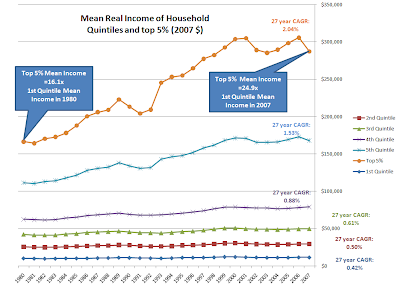
The journey into uncharted territory for the year over year change in EMRATIO continues - this is the monthly series from the St. Louis Fed, the Civilian Population to Employment ratio - smoothed into a 3 month moving average (3 Mo MA) and then subtracting the previous year's monthly measure to get the delta...
Uuuuuuuuugly continues to be the name of the game, for the sixth consecutive month the YoY change has matched or exceeded the previous record from 1954 by an increasing amount each month.
In comparing to previous recessions, the two most recent prior to the current recession would seem to be the best analogs with respect to the structure of civilian employment (service vs. manufacturing in particular). If the duration of YoY declines is at all analogous, this is going to deteriorate for an extended period of time - the peak declines for the previous two recessions occurred 31% to 36% of the way through the decline in 3 Mo MA of EMRATIO - measuring from the start of the EMRATIO declines six months prior to the declared recession start date, there could be 46 to 58 more months of YoY declines in the 3 Mo MA of EMRATIO from July, 2009...
(N.B.: When reading the graph, anything below the black line represents deterioration - as we approach from below, things continue to decline only more slowly - actual gains do not occur until the value is above the black line)










